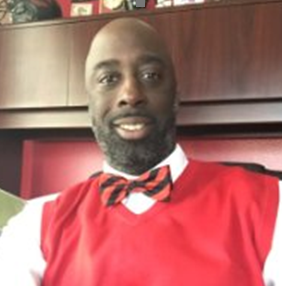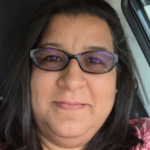
For the past year, parents and teachers advocated for change at a school in Manatee County, Fla. The Manatee School Board listened Tuesday, voting 4-1 to convert Lincoln Middle School to a charter.
Lincoln Memorial Academy will open in August 2018.
Only 22 other district-run public schools in Florida have converted to charters.
Parents and teachers argued the charter will enable the school to better serve its population, which includes large numbers of students who are learning to speak English, while providing more autonomy and accountability. Nearly 70 percent of students perform below grade level.
The Title I school now serves roughly 500 students in sixth through eighth grades. About 44 percent of its students are Hispanic. Every student receives free or reduced-price lunch.
Eddie Hundley, the principal of Lincoln, said the conversion will give him more autonomy to meet students’ needs. He wants to support the school’s English language learners (ELL) with new staff and programs.
Hundley and Lia Kaiser, a language arts and Spanish teacher who helps run programs for students who speak English as a second language, spoke with redefinED about their plans. The responses below are lightly edited for length, clarity and order.
Q: Why do you think converting to a charter will improve the learning experience for students?

A: Kaiser: We can better serve them. They have dreams and aspirations and what is keeping them [back] is the language acquisition. We are trying to make them as successful as possible so they will be ready for high school. If we give them these tools to be successful in high school and they graduate high school, the possibilities are large they will go to college and change not only their lives but the lives of their families.
Hundley: We will extend the student instructional day by an hour to better provide enrichment and academic support. In addition, [we’ll gain] the flexibility to offer classes and programs specific to our particular clientele.
Q: What are some of the ways you intend to help ELL students?
Hundley: One thing we will be able to provide is more support personnel for ELL students. We are now staffed at two paraprofessionals. With the charter, we would minimally have three paraprofessionals. Minimally, we will have one person dedicated to each grade level so ELL students can receive additional support in class. We would be looking to dedicate Ms. Kaiser full-time to managing these students [as an ESOL teacher]. Right now, she serves as the Spanish teacher, case manager and ESOL resource contact. At [a district-run] public school we were only allowed to hire two paraprofessionals.
Kaiser: The paraprofessionals will be there as a resource for the teacher.
Q: Are there any new specific programs you are putting in place to aid 101 ELL students at the school, which you were unable to implement [before the conversion]?
A: Hundley: Language for Writing is part of a series of language acquisition programs that is designed to help them learn particular jargon so they can better interact in the teaching and learning process. Part of that is being able to write. This program helps them to learn the nuances of the English language … and is designed to help middle-grade students who are still acquiring the language work through the process to become more prolific writers. We wouldn’t be able to do this [as part of the school district] because it is not part of the [district’s chosen] curriculum.
Kaiser: When our Spanish speakers are in an English-Language Arts class, they have not mastered the language. That is where the gaps come from. We can close the gap. That is what I find as their language arts teacher. I need to follow the curriculum the district gives me. It is already challenging for our English speakers. It is very rigorous. When it is rigorous and challenging for students who don’t speak the language, it is almost impossible to perform at the level the kids are. With this class, that gap will be closed.
[Hundley said the school will also implement dual-language electives. Students would be able to take classes in English and Spanish simultaneously. At the district level, students must attain a “B” to take classes in both languages.]
Kaiser: [Students] are helping English-speaking peers acquire Spanish and vice versa. Instead of having to take a Spanish class in high school they will have already met this requirement.
Q: Describe the previous curriculum. Did ELL students have specific constraints?
A: Kaiser: The language arts curriculum for middle school students is almost similar between sixth and seventh grade. It is a progression plan. We are looking at the standards and [a student] is determining the main idea and theme of the story. If you give them a narrative and a song with the same theme, they are asked to compare and contrast them. We know that is challenging for English speakers, [much less ESOL students]. When most of them come in, I say “good morning.” They don’t know what “good morning” means. It is hard to teach literary elements to someone who doesn’t know, “what is your name?” Since the [curriculum] is based on teaching those standards, I use many outside resources. I will look for a shorter version of the story at their grade level. I am still teaching to that standard.
Hundley: By not having an ESOL teacher, the onus is on the student to acclimate to the curriculum or hope the teachers implement these strategies. But with [a dedicated] ESOL teacher, everything in that class is geared toward helping them.


